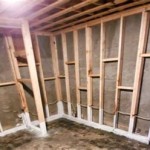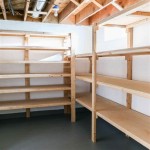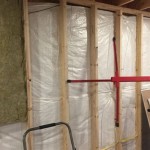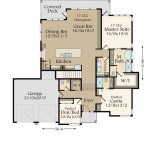How To Organize A Basement Full Of Stuff
Basements, often relegated to storage status, tend to accumulate a vast and heterogeneous collection of items over time. This accumulation, while perhaps serving a short-term purpose, can quickly devolve into a disorganized and overwhelming situation. Effectively organizing a basement full of stuff requires a systematic approach, combining planning, decluttering, implementing storage solutions, and maintaining the organized space.
Phase 1: Planning and Assessment
The initial step in basement organization involves a thorough assessment of the current situation. This phase aims to understand the scope of the problem and establish a clear roadmap for the subsequent stages. Begin by taking a complete inventory of the items stored in the basement. This can be done through visual inspection, creating a written list, or taking photographs of different sections. Note the type of items (holiday decorations, tools, seasonal clothing, etc.), their condition, and their approximate quantity. This inventory will serve as a baseline for decluttering and determining storage needs.
Next, evaluate the physical characteristics of the basement. Consider the dimensions of the space, including ceiling height, floor area, and any architectural features like support beams or pipes that may restrict storage options. Identify potential problem areas, such as dampness, leaks, or inadequate lighting. Moisture is a significant threat to stored items and addressing any water issues is crucial before proceeding with organization. Install a dehumidifier if necessary, and ensure proper ventilation. Adequate lighting is essential for working efficiently and safely in the basement during the organization process. Install additional light fixtures or use portable work lights to improve visibility.
Following the inventory and physical evaluation, determine the primary purpose of the basement. Is it solely for storage, or does it also serve as a recreational area, workshop, or laundry room? Clearly defining the purpose of the space will guide storage decisions and layout planning. If the basement has multiple functions, delineate specific areas for each, ensuring that storage solutions are tailored to the intended use. Finally, establish realistic timeframes for completing the organization project. Break the project down into smaller, manageable tasks, and allocate specific time slots for each. This will prevent feeling overwhelmed and increase the likelihood of success.
Phase 2: Decluttering and Sorting
Decluttering is an essential step in organizing any space, and it is particularly critical in a basement environment where unwanted items often accumulate. The goal of decluttering is to eliminate unnecessary items, freeing up valuable space and making the remaining items easier to organize and access. Employ a ruthless approach, objectively evaluating each item based on its usefulness, sentimental value, and condition. Ask: "Have I used this in the past year?" "Is it broken or damaged?" "Do I truly need this item?" Honest answers to these questions will lead to a more efficient decluttering process.
Categorize items into four distinct groups: items to keep, items to donate, items to sell, and items to discard. The "keep" pile should consist of items that are regularly used, hold significant sentimental value, or are essential for future use. The "donate" pile should include items that are in good condition but no longer needed. Local charities, thrift stores, and community organizations are excellent options for donating unwanted items. The "sell" pile should consist of items that have monetary value but are no longer needed. Online marketplaces, consignment shops, and yard sales are effective avenues for selling unwanted items. The "discard" pile should include items that are broken, damaged, or otherwise unusable. Dispose of these items responsibly, recycling where possible and properly discarding hazardous materials.
During the decluttering process, be mindful of potentially hazardous materials. Properly dispose of paints, chemicals, and electronic waste according to local regulations. Consider hiring a professional waste disposal service for large or hazardous items. Implement a system for documenting the donated and sold items for tax purposes. Keep receipts from charitable donations and track the revenue generated from selling items online or at yard sales. This documentation can provide substantial tax benefits. Once the decluttering process is complete, promptly remove the donated, sold, and discarded items from the basement. This prevents the temptation to reconsider decisions and keeps the space clear for the next phase of organization.
Phase 3: Implementing Storage Solutions
With the basement decluttered, the next step is to implement storage solutions that maximize space and improve organization. The choice of storage solutions will depend on the types of items being stored, the available space, and the budget. The overarching principle is to store items in a systematic and accessible manner. Start by selecting appropriate storage containers. Clear plastic bins are ideal for storing items that need to be visible, such as holiday decorations or seasonal clothing. Opaque bins are suitable for items that do not need to be readily accessible, such as archival documents or infrequently used tools. Label each container clearly with its contents using a permanent marker or label maker. This prevents the need to rummage through multiple bins to find a specific item.
Invest in shelving units to maximize vertical storage space. Adjustable shelving units are particularly versatile, as the shelf height can be adjusted to accommodate items of varying sizes. Metal shelving units are durable and suitable for storing heavy items, while plastic shelving units are lightweight and resistant to moisture. Consider wall-mounted shelving for lighter items, freeing up floor space. For items that are frequently used, opt for open shelving to facilitate easy access. For items that need to be protected from dust or moisture, choose shelving units with doors or drawers. Utilize overhead storage to capitalize on unused vertical space. Install ceiling-mounted shelves or racks for storing long, bulky items, such as lumber, pipes, or seasonal sporting equipment. Exercise caution when storing heavy items overhead and ensure that the supports are securely anchored.
Consider specialized storage solutions for specific types of items. Use garment racks for storing out-of-season clothing. Utilize pegboards for organizing tools and hardware. Employ rolling carts for transporting items around the basement. For items that are susceptible to moisture damage, such as books or photographs, store them in airtight containers with desiccant packets. Arrange storage solutions in a logical and accessible manner. Group similar items together and store frequently used items within easy reach. Create aisles between storage units to facilitate movement and access. Implement a labeling system that is consistent and easy to understand. Label not only the storage containers but also the shelves or areas where they are stored. Regularly evaluate and adjust the storage solutions as needed. As storage needs change over time, be prepared to reconfigure the layout and add or remove storage units accordingly.
Phase 4: Maintaining the Organized Space
Organizing a basement is not a one-time event but an ongoing process. Maintaining the organized space requires consistent effort and a commitment to established systems. Without regular maintenance, the basement will inevitably revert to its previous state of disarray. The key to maintaining an organized basement is to implement a system for regularly decluttering and reorganizing the space. Schedule a regular decluttering session, perhaps quarterly or semi-annually, to remove unwanted items and re-evaluate storage needs. During these sessions, review the contents of each storage container and discard any items that are no longer needed or used.
Instill habits for preventing clutter from accumulating in the first place. Avoid using the basement as a dumping ground for unwanted items. Before storing a new item in the basement, consider whether it is truly needed and whether there is a designated space for it. Implement a "one in, one out" rule: for every new item that is brought into the basement, an old item must be removed. Encourage all household members to participate in maintaining the organized space. Assign specific tasks to each person and ensure that everyone understands the organization system. Clearly communicate the importance of maintaining the organized space and the benefits it provides.
Address any maintenance issues promptly. Repair leaks, clean up spills, and replace damaged storage containers. These issues, if left unaddressed, can lead to further disorganization and damage to stored items. Regularly inspect the basement for signs of pests, such as rodents or insects. Implement preventative measures, such as sealing cracks and crevices, to prevent infestations. Conduct periodic inventory checks to ensure that items are properly labeled and stored. Update the inventory list as needed to reflect any changes in the contents of the basement. By consistently maintaining the organized space, the basement can remain a functional and efficient storage area for years to come.

How To Declutter And Organize The Basement Jamie Lundstrom

How To Declutter And Organize The Basement Jamie Lundstrom

How To Declutter And Organize The Basement Jamie Lundstrom

How To Declutter And Organize The Basement Jamie Lundstrom

10 Biggest Organizing Mistakes People Make In Storage Spaces

How To Organize Your Basement Like A Pro Loadup

10 Biggest Organizing Mistakes People Make In Storage Spaces

How To Declutter And Organize The Basement Jamie Lundstrom

Organized Basement Tour Abby Organizes

Basement Declutter Project With Before After Pics Tips Momof6
Related Posts







